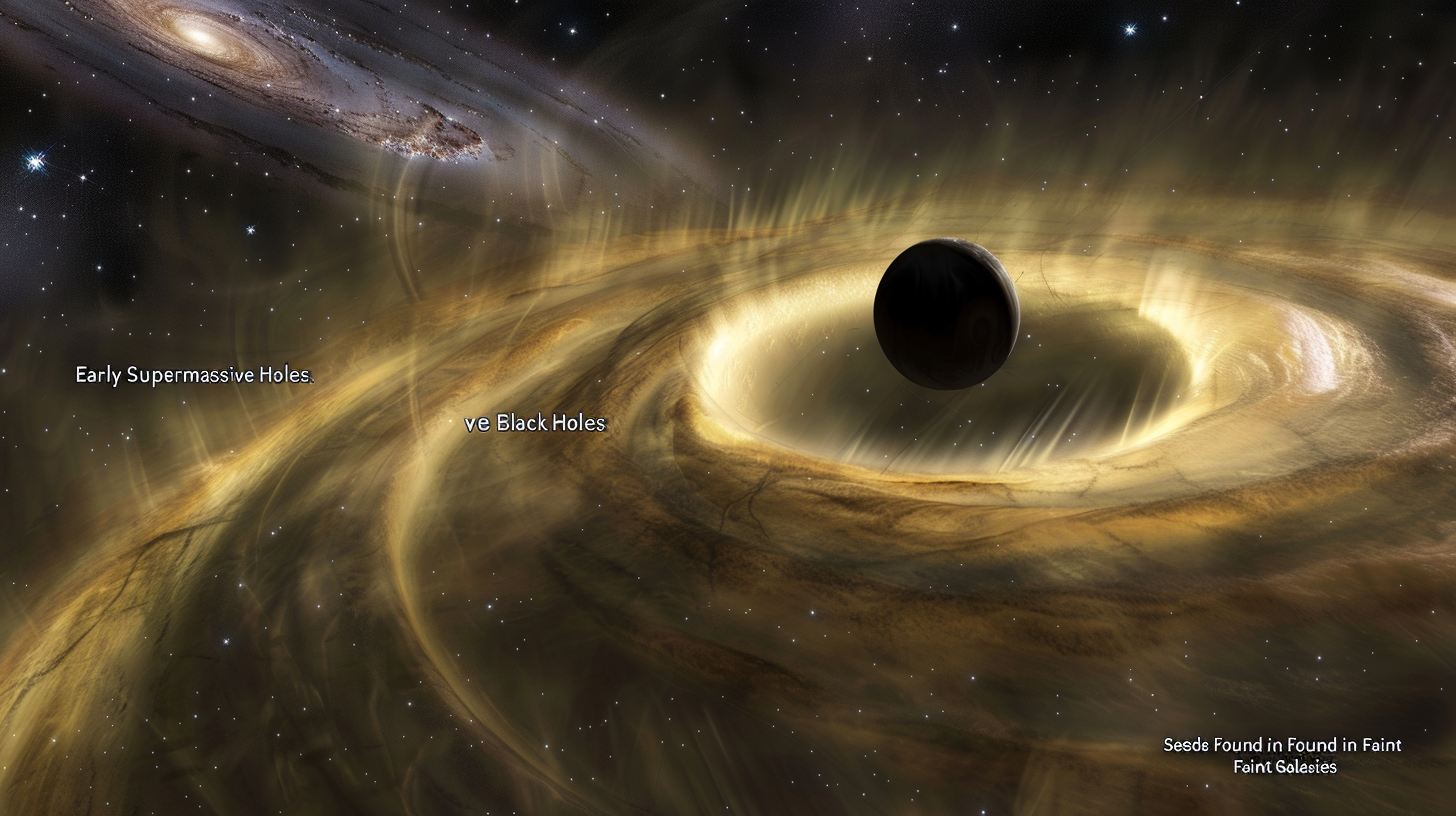
Potential Future Trends in the Study of Supermassive Black Holes
Supermassive black holes, the colossal entities that reside at the centers of galaxies, have long fascinated astronomers and researchers. The discovery that faint galaxies could potentially be the seeds of these supermassive black holes opens up a realm of possibilities for future trends in the field of astrophysics. This article explores the key points of recent Hubble observations and presents predictions and recommendations for the industry.
1. Understanding the Origin of Supermassive Black Holes
Hubble observations have shed light on the possibility that faint galaxies could be the seeds of supermassive black holes – the formation of which has remained a mystery. This breakthrough discovery could potentially revolutionize our understanding of how these enigmatic entities come into existence.
The future trend in this domain will likely involve further research efforts to validate this hypothesis by conducting extensive observations and simulations. Astronomers will aim to gather more data on the faint galaxies that could potentially lead to the birth of supermassive black holes. By studying their properties, dynamics, and growth mechanisms, scientists can provide insights into the evolutionary processes that shape the formation of these cosmic behemoths.
2. Probing the Early Universe
If faint galaxies are indeed the primordial seeds of supermassive black holes, it opens up an exciting avenue for studying the early universe. Supermassive black holes are thought to have been present shortly after the Big Bang, and their formation is closely linked to the growth and evolution of galaxies.
Future trends in this field may involve utilizing advanced telescopes and instruments to observe even fainter galaxies in the early universe. By identifying and analyzing these faint objects, researchers can gain valuable insights into the cosmic processes that occurred billions of years ago. This could help answer fundamental questions about the origins of galaxies, the nature of dark matter, and the early stages of cosmic evolution.
3. Exploring Gravitational Waves
Gravitational waves, ripples in the fabric of spacetime, have recently emerged as an invaluable tool for studying astrophysical phenomena. The fusion of black holes is known to produce powerful gravitational waves that can be detected by specialized observatories, such as LIGO.
Future trends in the study of supermassive black holes may involve investigating the gravitational waves generated by the merger of smaller black holes with the faint galaxies that are potential seeds. By detecting and analyzing these gravitational waves, scientists can gain deeper insights into the dynamics, growth, and properties of supermassive black holes.
4. Recommendations for the Industry
The potential future trends in the study of supermassive black holes present exciting opportunities for the astrophysics industry. To make significant advancements in this field, the following recommendations are proposed:
- Increased Funding and Collaborative Efforts: Governments and research institutions should allocate more resources to fund large-scale projects focused on the study of supermassive black holes. Collaboration between different scientific communities and international organizations can lead to breakthrough discoveries.
- Development of Advanced Observation Techniques: The industry should invest in the development of advanced telescopes, instruments, and detectors capable of observing fainter objects with higher precision and sensitivity. This will enable researchers to gather more accurate data and unravel the mysteries surrounding supermassive black holes.
- Integration of Artificial Intelligence (AI): AI algorithms can aid in the analysis and interpretation of vast amounts of observational data. Implementing AI tools and machine learning techniques can accelerate the extraction of valuable insights from complex datasets, thereby enhancing our understanding of supermassive black holes.
In conclusion, the recent Hubble observations suggesting that faint galaxies could be the seeds of very early supermassive black holes have opened up new possibilities for the future of astrophysics. By focusing on understanding the origin of these cosmic giants, probing the early universe, and exploring gravitational waves, scientists can push the boundaries of our knowledge. With increased funding, advanced observation techniques, and the integration of AI, the astrophysics industry can unlock the secrets of supermassive black holes and revolutionize our understanding of the cosmos.
References:
- Nature, Published online: 19 June 2024; doi:10.1038/d41586-024-01703-3
